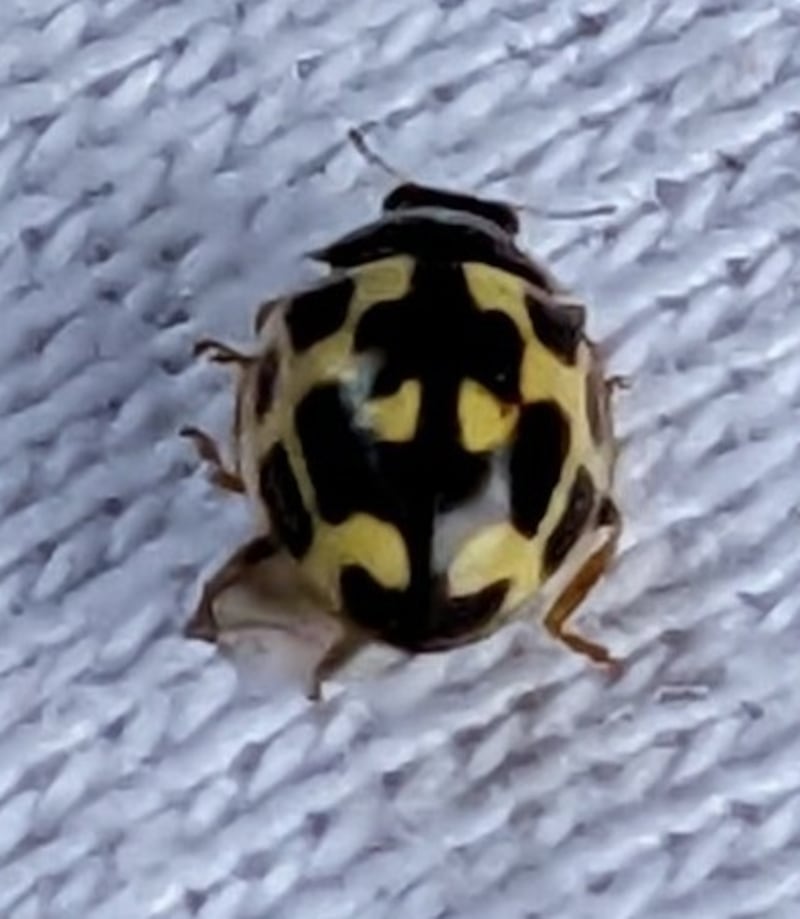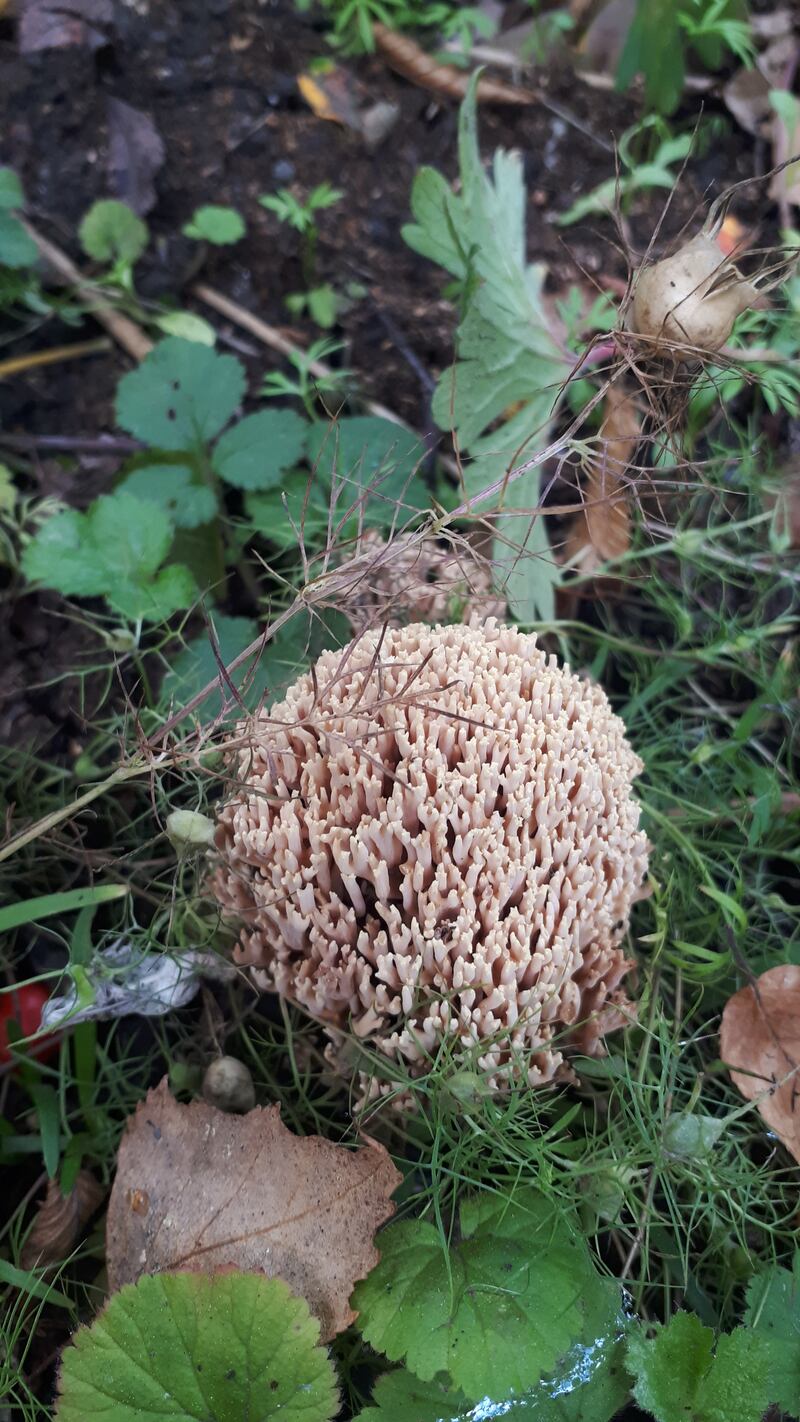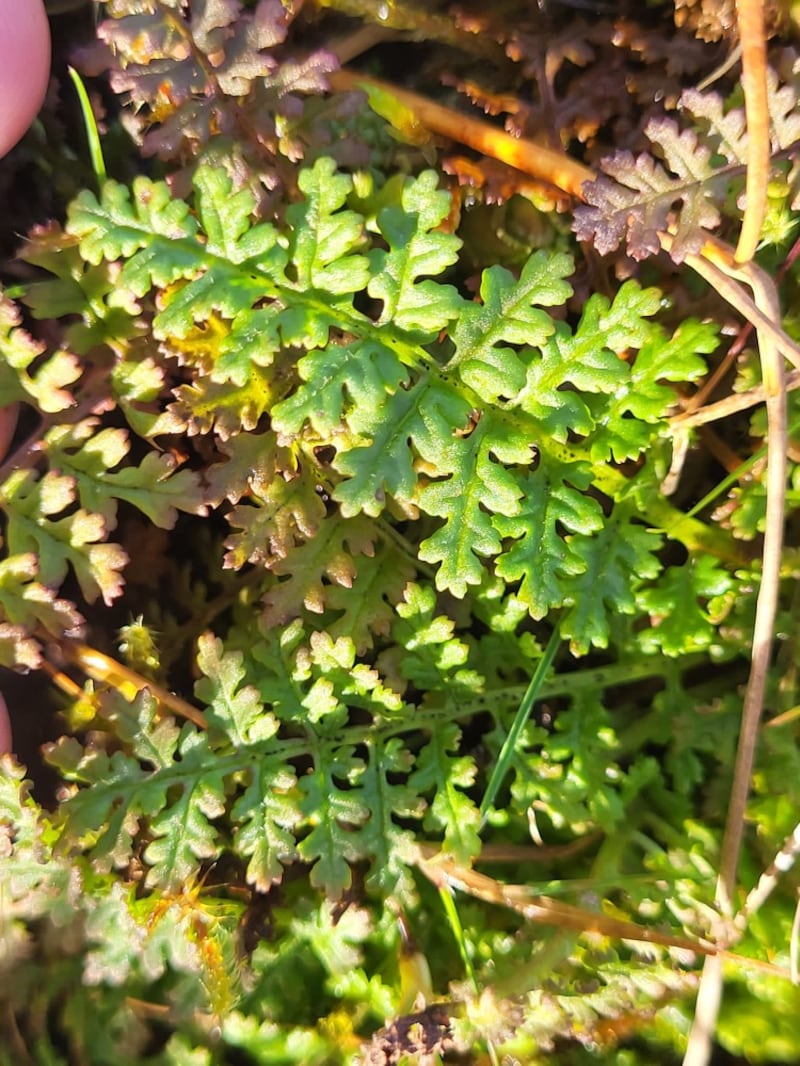This ladybird landed on my sister’s jumper and then hopped into mine! Are its colours unusual? Cara Ní Mhuirí (6), Co Offaly

There are 19 different species of ladybirds recorded for Ireland and only 10 of them are red with black spots. Some are black with red spots. Some are red with cream spots or pink spots. There is a yellow one with black spots. Your ladybird is yellow with black rectangles and spots. It is called the 14-spot ladybird and is widespread and common.
An oak leaf in a Dublin garden has circular raised – what look like – brown fungal spots on the back. Tubakaia leaf spots are what Mr Google seems to describe similar ones. Are they damaging to the tree? Bobby Carty, Co Dublin

No and no. These are spangle galls caused by a tiny gall wasp, Nueroterus quercusbaccarum, They are part of the lifecycle of this wasp and don’t harm the tree. Mr. Google doesn’t recognise everything.
READ MORE
I found a couple of clumps of what looks like a fungus in my front garden. What is it? Susan Stafford-Langan, Dublin 6W

It is Ramaria stricta, the upright coral fungus. It grows on the stumps of – often buried – coniferous and broad-leafed trees.
What is this plant that I saw on the Cavan Burren, growing with molinia grass close to the Shannon Pot? It has me stumped. Louise Mac Elwain, Co Monaghan

It had me stumped too. I was thinking some sort of fern but, having consulted with several experts, it turns out to be the leaves of the marsh lousewort. This flowers from May to September and its name reflects the erroneous European belief that eating it made cattle lousy. However, grazing in such wet habitat could well cause them to pick up liver fluke.
The lead photo shows a male hooded merganser discovered by Stephen Meany while he was engaged in survey work for Birdwatch Ireland’s Wetland Survey around Clew Bay in Co Mayo. The shot was taken by John Coveney. This is only the seventh Irish record of this North-American duck and the first for Mayo.
Please submit your nature query, observation, or photo with a location, via www.irishtimes.com/eyeonnature














